Ancient building blocks toys can also be trendy toys
Hu Xixi, an enthusiast of ancient building blocks toys and architecture, says: “It starts from this base, this pillar is the foundation, gradually pieced together from bottom to top, seamless. The protrusion is the tenon, the indentation is the mortise, it’s a tenon-mortise structure. This pavilion, I assembled it in 40 minutes.”
Hu Xixi, a Beijing girl, has been a fanatic of ancient building blocks toys and Chinese culture since her school days, often visiting various ancient buildings in Shanxi. After starting work, a colleague gave her a hand-drawn book by Liang Sicheng titled “Illustrated History of Chinese Architecture,” which made her realize that the buildings she had visited came alive in the book. Since then, her passion for ancient architecture has only grown. Six or seven years ago, she discovered a niche market for ancient building blocks toys, which opened up a new world for her.
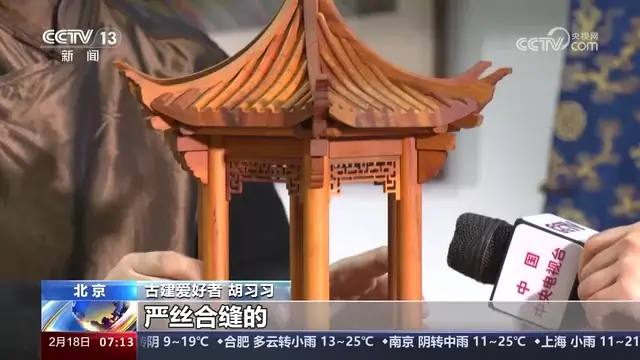
Hu Xixi, an enthusiast of ancient building blocks toys and architecture, says: “Altogether, I’ve assembled over ten sets. Our ancient ancestors in China started with technical skills and gradually turned them into art. By playing with these blocks, you can feel the architectural culture that our ancient ancestors wanted to express, and experience the beauty of ancient Chinese architecture. Now, a large number of young players have joined in, some of them born in ’95, 2000, or even later.”
In the past couple of years, with the increasing popularity of domestic trends, the market for ancient building block toys has also been on the rise. In a factory in Hangzhou, Zhejiang Province, on the last day before the festival, workers are still working overtime to process toy models.
Liu Wenhui, founder of Wanfeng Tenon-Mortise: “We’re extremely busy. Before the Spring Festival, I had to work until New Year’s Eve, and then I had to start work on the third day of the lunar new year. Because we’ve received a lot of orders, and we also launched new products before the New Year, so there wasn’t much time for rest.”
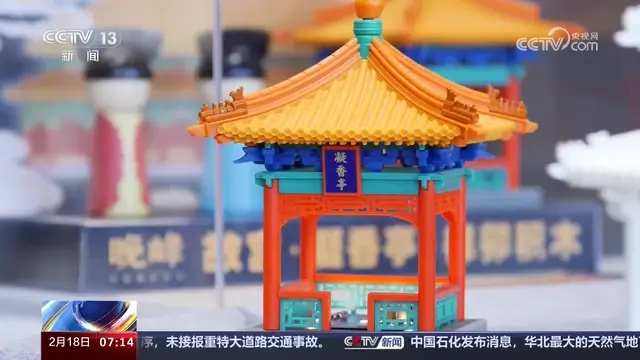
Liu Wenhui, a Shanxi native who studied Chinese painting and design, entered the tenon-mortise block industry in 2013. At that time, the industry was not well-regarded, with high costs and minimal popularity. But his dedication to Chinese aesthetics kept him going. After continuous improvement and optimization, especially with the rise of domestic trends, the market for ancient building block toys finally changed.
Liu Wenhui, founder of Wanfeng Tenon-Mortise: “In the second half of 2019, starting from the summer, we had sales of several hundred thousand every month. In December, we sold over 400,000, and we were basically out of stock. It felt like spring was coming.”
Starting in 2020, Liu Wenhui expanded the factory, and so far, production capacity has been expanding, and the market size has been growing.
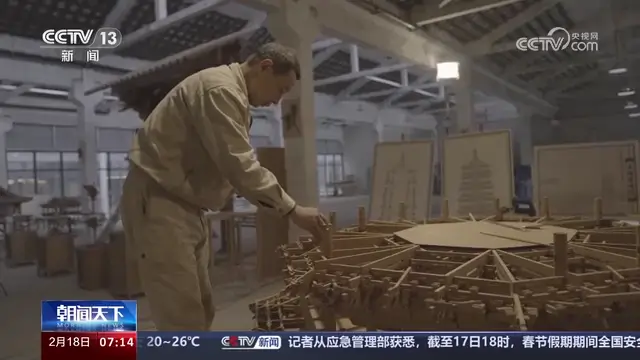
Liu Wenhui, founder of Wanfeng Tenon-Mortise: “Our development has been very rapid. Sales exceeded 10 million yuan in 2023, and we hope to double that in 2024. Truly, the revival of ancient architecture is part of the domestic trend.”
With promising market prospects and a love for traditional Chinese architecture, a group of like-minded young people have gathered together.
Designer Zheng Feixiang says: “No matter which industry you enter, you will have a mission. Entering the ancient architecture industry, maybe you just want more people to see the subtlety of ancient buildings, and this process will catalyze a sense of mission within yourself.”

Liu Wenhui, founder of Wanfeng Tenon-Mortise: “Would anyone have worn Hanfu 20 years ago? No, but today, the Hanfu industry is huge. The entire country, all of us Chinese, have a stronger sense of identity with Chinese culture. Architecture is truly alive, it’s living history, living culture. I believe that in another 10 years, tenon-mortise in China will be very large, it will definitely be a mature industry.”
Overseas businesses favor ancient building blocks toys and other Chinese-style trendy toys
The national trend has ignited the market for ancient building block toys and also brought Chinese aesthetics to the world. The recently concluded 2024 Nuremberg International Toy Fair attracted many overseas merchants’ attention to the “Oriental Trend” of Chinese style.

The Nuremberg International Toy Fair is the world’s largest toy fair, with this edition attracting more than 2,300 exhibitors from 68 countries and regions. Among them, there were 410 mainland Chinese exhibitors, setting a new record for the fair. Toys containing elements of traditional Chinese culture were popular at the fair. Toys like this ancient tower-shaped tenon-mortise toy, with a total of 160 parts, can be erected steadily without nails or glue. These toys, imbued with Chinese wisdom and aesthetics, attracted many overseas exhibitors.
Exhibitor: “I think this is a very iconic interpretation of Chinese architecture. I love that it doesn’t require any glue to build, and the colors are beautiful. It’s very systematic.”
Exhibitor: “When building modern concrete houses, you just need to pour in the concrete. But when you build ancient Chinese buildings like this, it requires a lot of manual work and intelligence.”
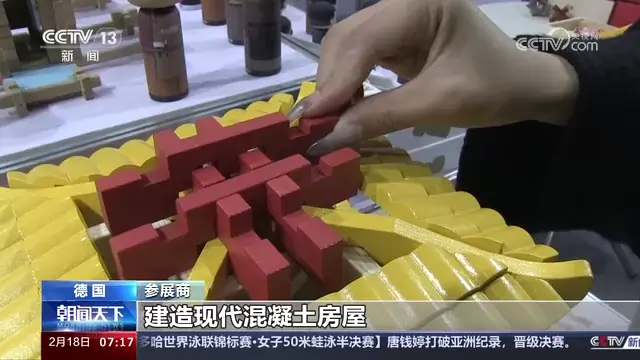
Chinese Exhibitor He Bin: “In terms of the Eastern aesthetics of China, especially in Europe, they are very receptive, but they just can’t distinguish what is Chinese, so we need to tell them that this is from China.”
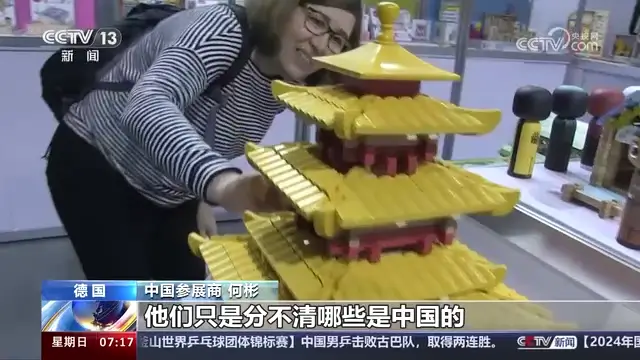
In addition to tenon-mortise building block toys, various Chinese-style 3D metal puzzles, such as the Golden-winged Bird Crown, the Ten-thousand-worker Bridal Sedan, and the Phoenix, attracted many exhibitors’ attention with their unique shapes and exquisite craftsmanship.
Exhibitor: “I really like this thing. I think it’s beautiful. I like its colors, its architecture, everything about it.”
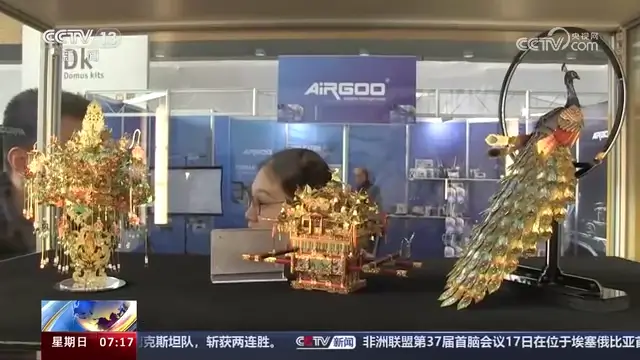
In recent years, with the rise of domestic trends, Chinese culture has been increasingly recognized worldwide. At the toy fair, toys rich in Chinese elements not only allow global consumers to get close to Chinese culture and experience its charm and ingenuity but also make these Chinese “smart” creations become “new national products” going abroad.
